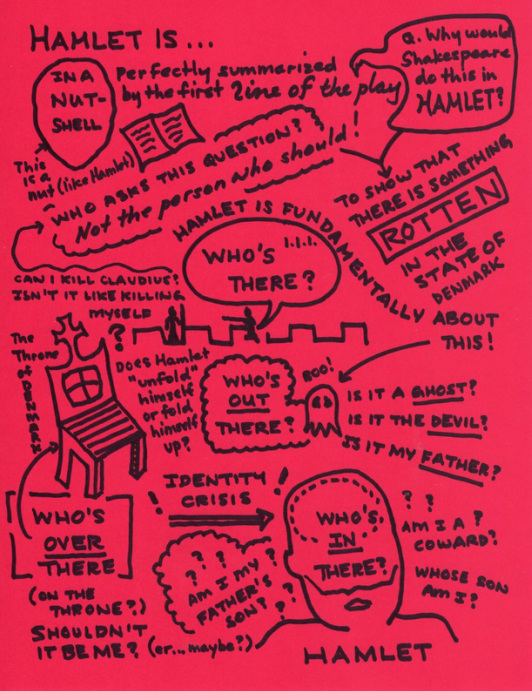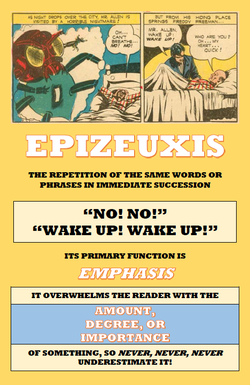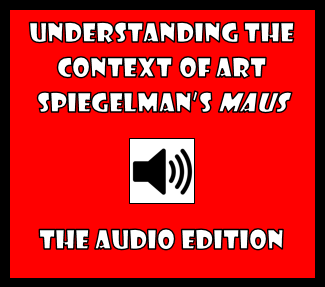|
by Glen Downey, Comics in Education, www.comicsineducation.com I can remember having a really interesting conversation with Dr. Michael Best, with whom I taught a course called Shakespeare by Individual Study at the University of Victoria. This was back in 1995 when I was still a Ph.D. student there. In discussing Hamlet prior to teaching it, Dr. Best indicated that the entire play is actually summarized in its opening line: "Who's There?" Recently I was thinking about this again and decided to do a little visual brainstorming both to remember our conversation and to work a couple of things out for myself. You'll excuse my artistic mediocrity. It explains why I write graphic novels, I suppose, and don't illustrate them. Okay, so here are my scribbles... So, not too shabby, I suppose. That first line turns out to be a doozy, though.
So it's complicated, I suppose. But the visual brainstorming allows us to make sense of it a bit. It doesn't let us write it out in a coherent, five paragraph essay, but it does let us get our scribblings down and begin to make sense of things. That's a pretty cool thing, though, I think.
0 Comments
Your comment will be posted after it is approved.
Leave a Reply. |
Glen DowneyDr. Glen Downey is an award-winning children's author, educator, and academic from Oakville, Ontario. He works as a children's writer for Rubicon Publishing, a reviewer for PW Comics World, an editor for the Sequart Organization, and serves as the Chair of English and Drama at The York School in Toronto. If you've found this site useful and would like to donate to Comics in Education, we'd really appreciate the support!
Archives
February 2019
|




 RSS Feed
RSS Feed
